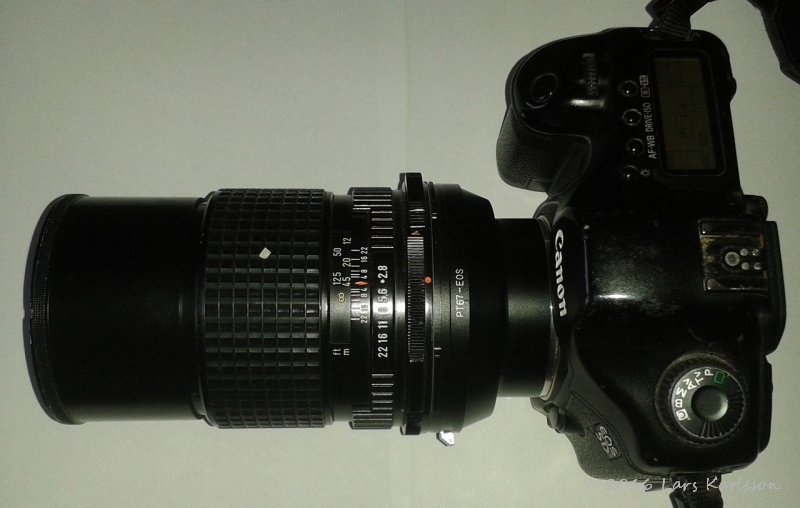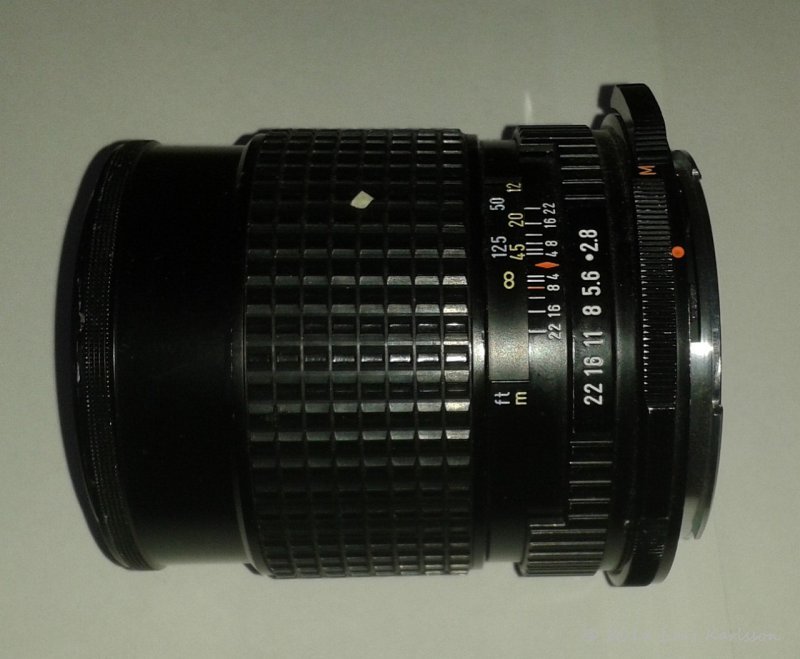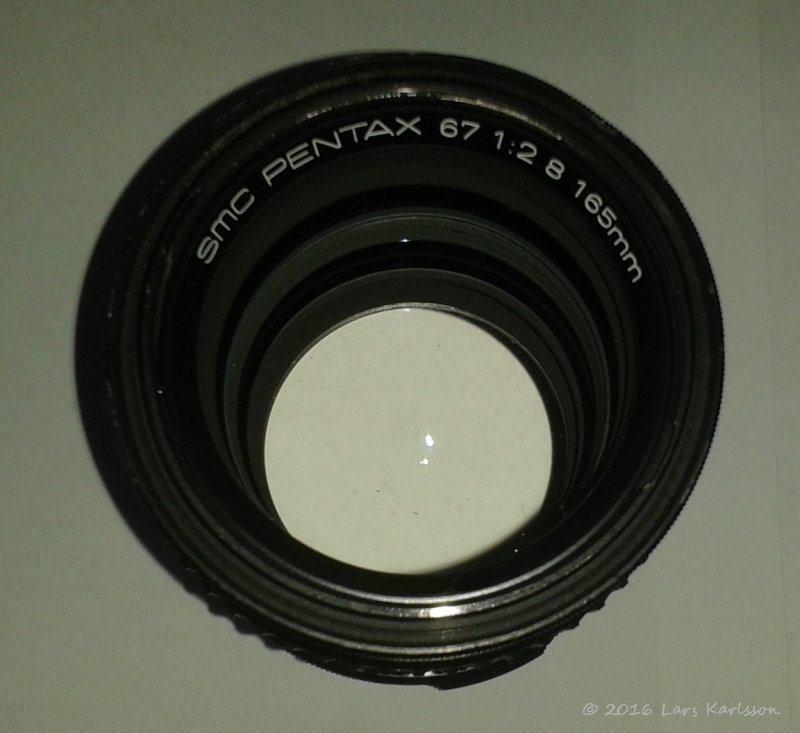|
Advertisement / Annons: |
Project:
|
Content:
Note: |
6. Pentax 67 165 mm lenses mounted on a Canon full frame cameraThe Pentax 67 lens is built like a tank and it is nice to be a owner of it. Even better if I can have some use of it. 
This is how it looks when mounted on a Canon full frame camera. 
This is the adapter, there are two versions of Pentax 67 adapters. The one with only inner bayonet and the more advanced with both inner and outer bayonet. The yellow arrows pointing at two of the outer taps, if they are not there you can't use the adapter to a telephoto lens. The outer bayonet is used for the longer focal lenses, longer then 300 mm focal length. It's a big adapter, inside the adapter there is space enough to mount a 2" filter. 
The lens itself is a big chunk of metal. 
Looking through the lens is just as to look into a very big hole. The 6x7 format has an image circle of 90 mm, to cover a full frame sensor you only need just 44 mm. It's very over sized, that's one reason why it give almost no vignetting on a full frame sensor. Wikipedia has more information about the Pentax 6x7 system: I once rejected this lens because it was to soft. Now I give it a second chance. I did some test to take photos of the Moon, but immediately I found it was difficult to reach focus at infinity, it's on the limit. I need to shorten the adapter or adjust the infinity focus stop inside the lens. Both of them are complicated to do. When I have solved this problem I come back. Anyway I don't think this old construction will perform very well about the sharpness. I did some primitive test earlier and it look a bit soft if I compare to my Sigma APO. With my new camera with live view camera there is much easier to get the lens in perfect focus. Conclusion so far:
There are newer designed medium format lenses with ED lens elements. But modern lenses can normally only be controlled together with its camera. There some Pentax 645 and 67 lenses with ED design, they maybe can be set manually aperture and focus. When using a medium format lens on a modern DSLR camera there must be an adapter between, could be both expensive and complicated. I got problem with the focus at infinity. I just wonder how a Canon 200 f/2.8 L lens will perform about vignetting, they are told to be very good to astrophotographing and all photos that I have seen look very good, all the way out to the corner. And how about small telescopes, say 350 mm f/5.6 APO flat field design, are they better then high quality lenses? I have hard to believe that, but there are other advantages of a telescope. Now I'm eager to do a star test with the Pentax lens even if I can't get it to focus perfect at infinity.
|
|